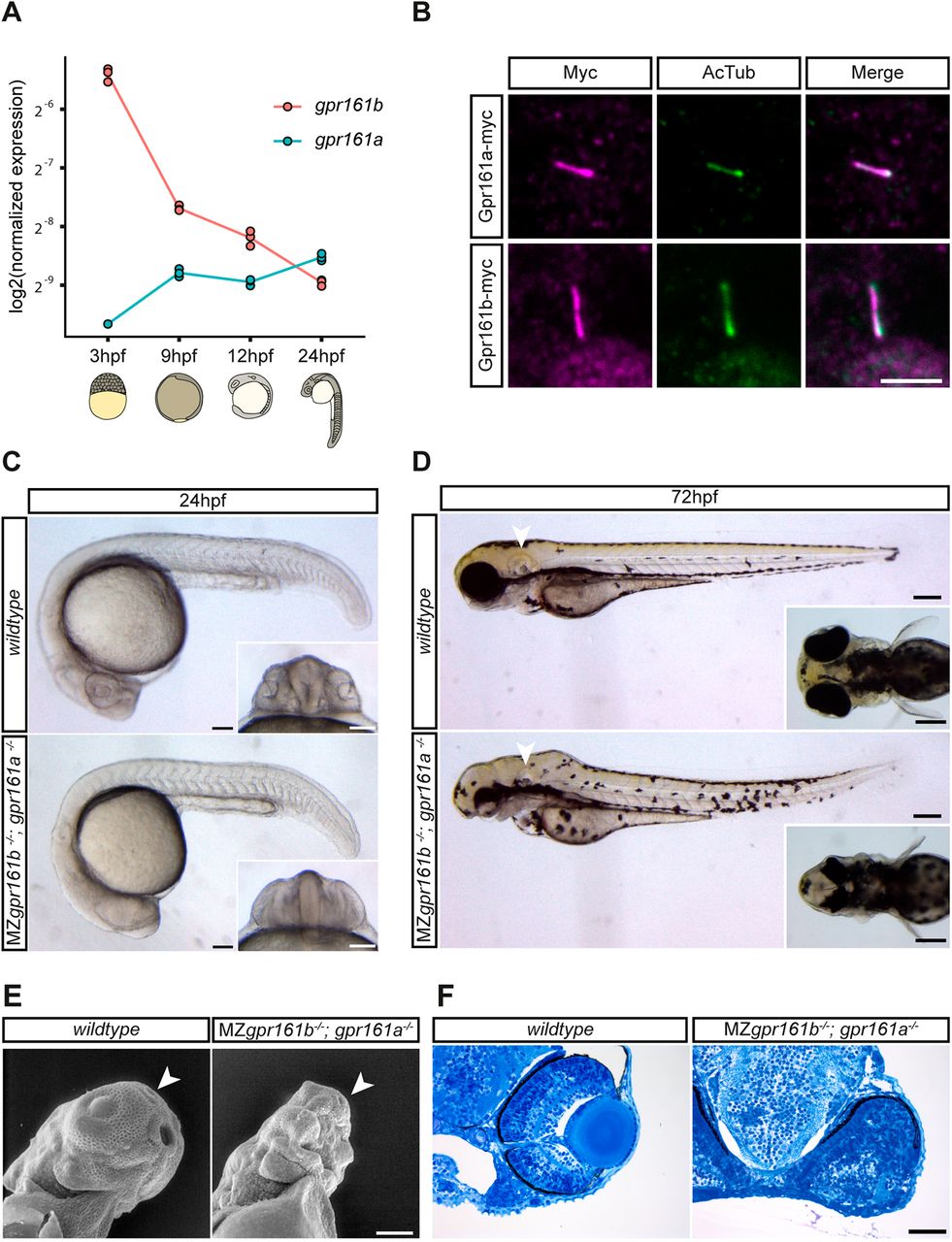Fig. 1 Gpr161 is an evolutionarily conserved ciliary GPCR that is essential during embryonic development. (A) gpr161a and gpr161b transcript levels at different stages of development analysed in whole-embryo lysates in triplicate using RT-qPCR. (B) Wild-type embryos were injected with gpr161a-myc or gpr161b-myc mRNA at the one-cell stage and fixed at 9 hpf before immunostaining for acetylated tubulin (AcTub; purple), a marker for the ciliary axoneme, and Myc (green). Scale bar: 5 µm. (C) Lateral views of wild-type and MZgpr161b−/−; gpr161a−/− embryos at 24 hpf. Insets show ventral views of the developing eyes; arrowheads indicate the otic vesicle. Scale bars: 100 µm. (D) Wild-type and MZgpr161b−/−; gpr161a−/− embryos at 72 hpf. Arrowheads indicate otic vesicle. Scale bars: 200 µm. Insets show a dorsal view of the head. (E) Ventrolateral views of the craniofacial region of wild-type and MZgpr161b−/−; gpr161a−/− embryos at 72 hpf taken by scanning electron microscopy; arrowheads indicate the olfactory pit. Scale bar: 100 µm. (F) Transverse semi-thin sections of the eye in wild-type and MZgpr161b−/−; gpr161a−/− embryos fixed at 72 hpf (Richardson staining). Scale bar: 50 µm.
Image
Figure Caption
Figure Data
Acknowledgments
This image is the copyrighted work of the attributed author or publisher, and
ZFIN has permission only to display this image to its users.
Additional permissions should be obtained from the applicable author or publisher of the image.
Full text @ Development

